I Can Wrap a Car, But Can I Apply Paint Protection Film To Save My Car’s Paint?
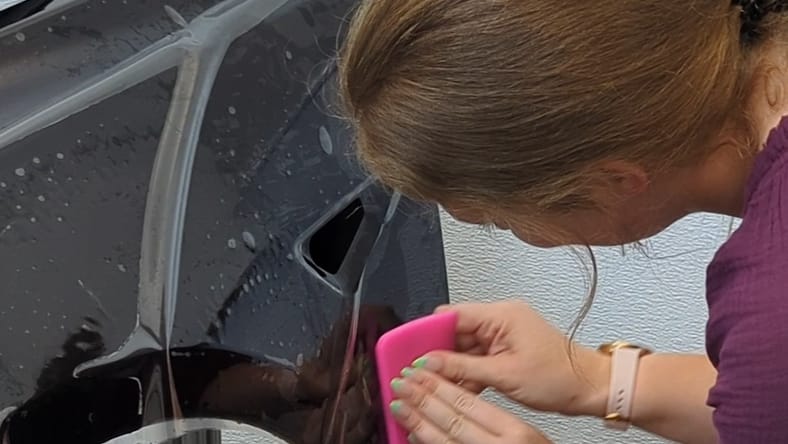
Watching people wrap a car with vinyl is mesmerizing; they pull out thin sheets of colored vinyl, smooth it out with a squeegee and carefully cut around objects. When it’s done it looks like paint, but at a fraction of the cost and effort. Wrap doesn’t hurt a car’s original paint, which can be damaged by other things: rocks, chemicals and dirt. But a car’s original paint can hold a deeper sheen, metallic flake or layers of gloss and color that wrap can’t. Wouldn’t it be better to simply protect your car’s paint instead?
Paint protection film can be a true paint-saver. This thin, clear film not only lets your paint shine through, it deflects damage and allows road grime and other substances to more easily wash off.
And get this: It’s self healing. It can sustain damage and then self-seal. I visited the headquarters of XPEL, one of the leading companies that makes paint protection film, as well as window tint film and learned what it takes to install these on a car.
This story is 100% human researched and written based on actual first-person knowledge, extensive experience and expertise on the subject of cars and trucks. No AI was used. Additionally, I was a guest of XPEL for this story, but all opinions are my own.
A Flawless Look Demands a Quality Installation

Ever see a car on the road with a splotchy, pock-marked window tint? This can be due to an inferior product, improper application, an untrained installer or DIY’er who just didn’t know what they were doing. There are a lot of car protection products on the market and without the right tools and training, your car may look like that splotchy window tint job.
This is why XPEL has partnered with shops around the country and trained technicians in applying their products. This makes for happy customers and ensures the product functions as intended. Installers attend a 5-day training course at centers around the globe. Here, they learn the ins and outs of the product, proper application technique and learn from instructors with extensive experience.
Read: Got Scratches and Chips In Your Car’s Paint? You Need PPF, and XPEL is Here to Help
A Lab Where Students Learn How to Apply Paint Protection Film

During our trip to XPEL, we had the opportunity to try our own hands at applying some of the films. Prior to applying the films ourselves, we watched demos of each process. While we received a very abridged crash course, the instruction was clear and the hands-on demonstration made the process less intimidating.
The three paint protection film learning labs were full of body panels – a tailgate here, a bumper there – all painted half black and half white, with bright LED lights illuminating them. Students start on easier panels, like hoods and fenders, and advance to more complex panels, such as bumpers.
The two-toned paint helps students learn how the visibility of imperfections in their application differs depending on the car’s OEM paint color – bubbles, wrinkles, and other mistakes are much easier to spot on dark colors (black) than light (white).
Read: Need an Oil Change? New Tires? 4 Awesome Car Maintenance Apps to Keep your Car Running Smooth
I Can Wrap a Car, So Installing Paint Protection Film Will Be Easy. Right?
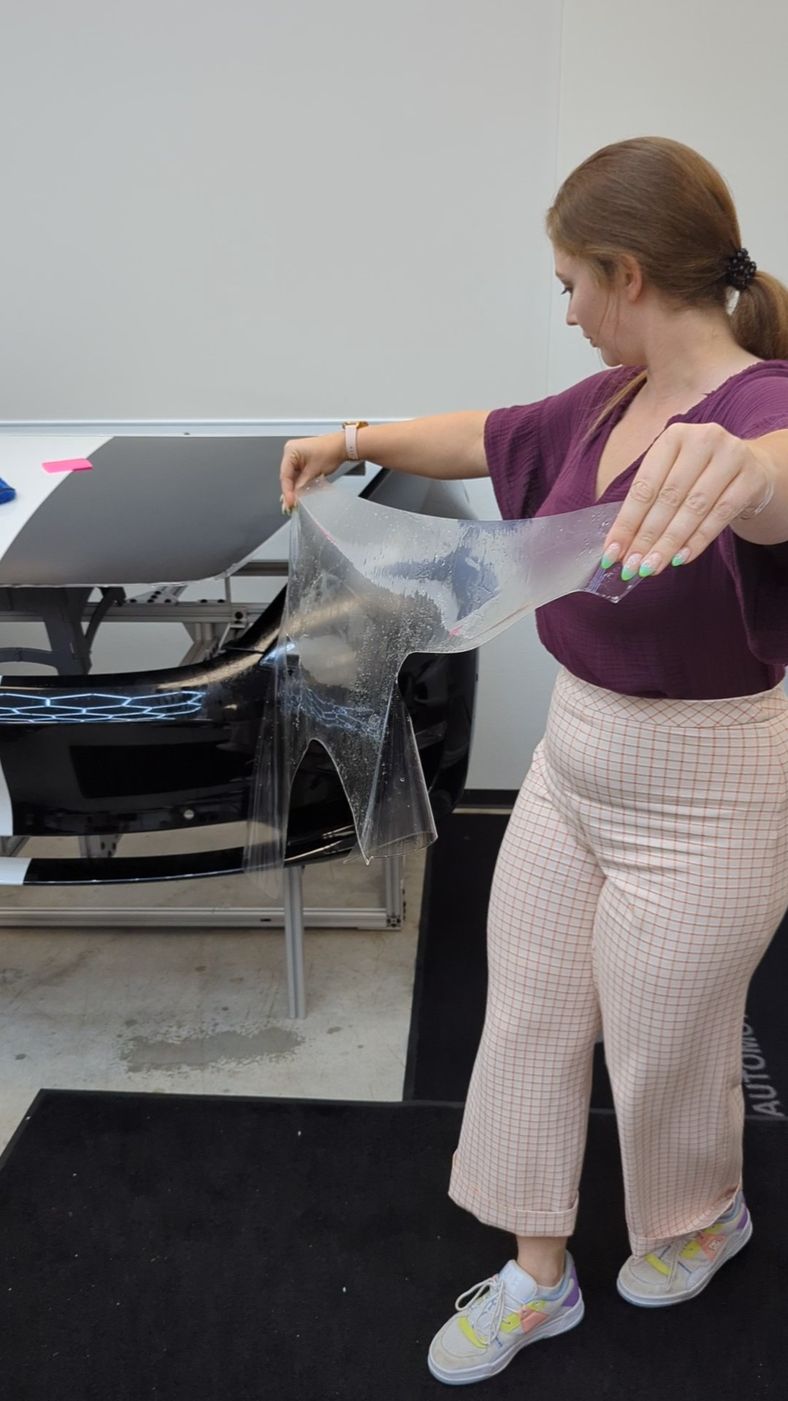
It was in paint protection film classroom number three that I got to get my hands dirty, or really more, wet. PPF is applied wet – very wet. After thoroughly cleaning the panel, the installer uses a soap and water solution, called slip, to coat the panel, his or her hands, and the sticky side of the film. Then, the film is carefully laid and aligned one “alignment point,” or corner, at a time.
The paint protection films are cut to shape using XPEL’s templates, which are designed through careful R&D using test vehicles in their shop, not just 3D renders. Typically, the installation shop will purchase a large roll of film and cut the necessary shapes using a large cutting machine in their shop, but XPel does have the ability to cut the film to shape, as well. XPel has a library of over 80,000 templates currently available.
When the paint protection film template is created, the designers have the application process in mind, which is of the utmost importance since the film, which is two-dimensional, is being molded to a three-dimensional object. Experienced installers who have completed XPEL’s course (which, of course, they are required to do in order to carry the product) can glance at certain panels and deduce which corner to start with and what order to proceed in. For more complex panels, XPEL provides a sort of map, which shows which corners, edges, and points to tack down in which order.
Applying Paint Protection Film Looks Easy. But Is It?
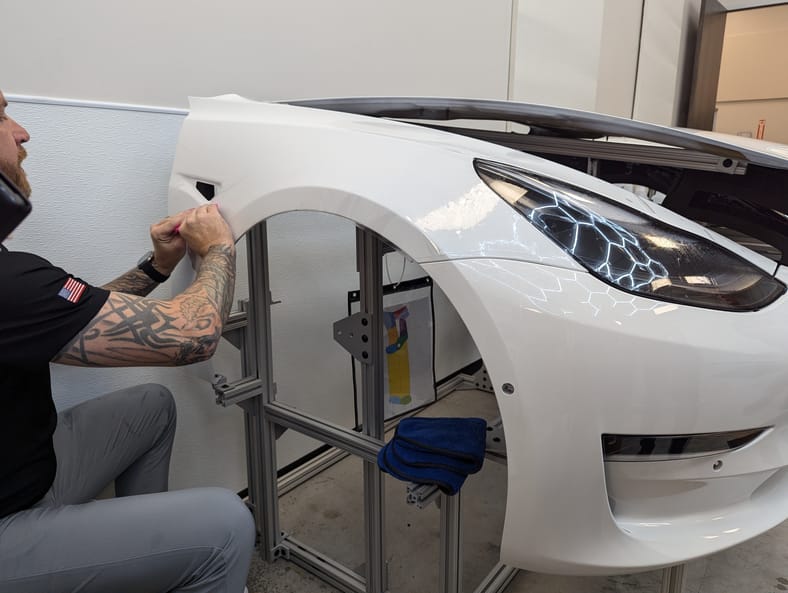
The film itself is tacked down using a careful process of spraying an alcohol solution (which dries out the moisture under the film), taking a small area, then stretching to align the next corner, edge, or area. It looked so easy in the demonstration, but let me tell you – it is NOT easy! My completed panel was a solid ten-foot job, meaning it would look great from ten feet away. But up close, I could still see small air and moisture bubbles, as well as lines left from mistakes during my work, which would be unacceptable in a professional application.
All this is to say, applying paint protection film, window tint, and/or ceramic coat is hard! All these jobs are intended to be performed by professionals. The performance of the products themselves are incredibly dependent on proper installation and thus, you film will likely not work as intended and may fail early if you try to apply it yourself. Additionally, XPEL does not warranty products that are not professionally installed.
XPEL has offered a smaller roll for little DIY applications, such as mirrors or patches near the wheels. The did mention, though, that there have been a significantly greater number of customer complaints for this DIY film that have all boiled down to DIY installation.
While it is true that labor comprises the majority of the cost of paint protection film, ceramic coat, and window tint, the cost is worth it to ensure the product does what it is supposed to do.
If You Want it Done Right, Ask a Professional
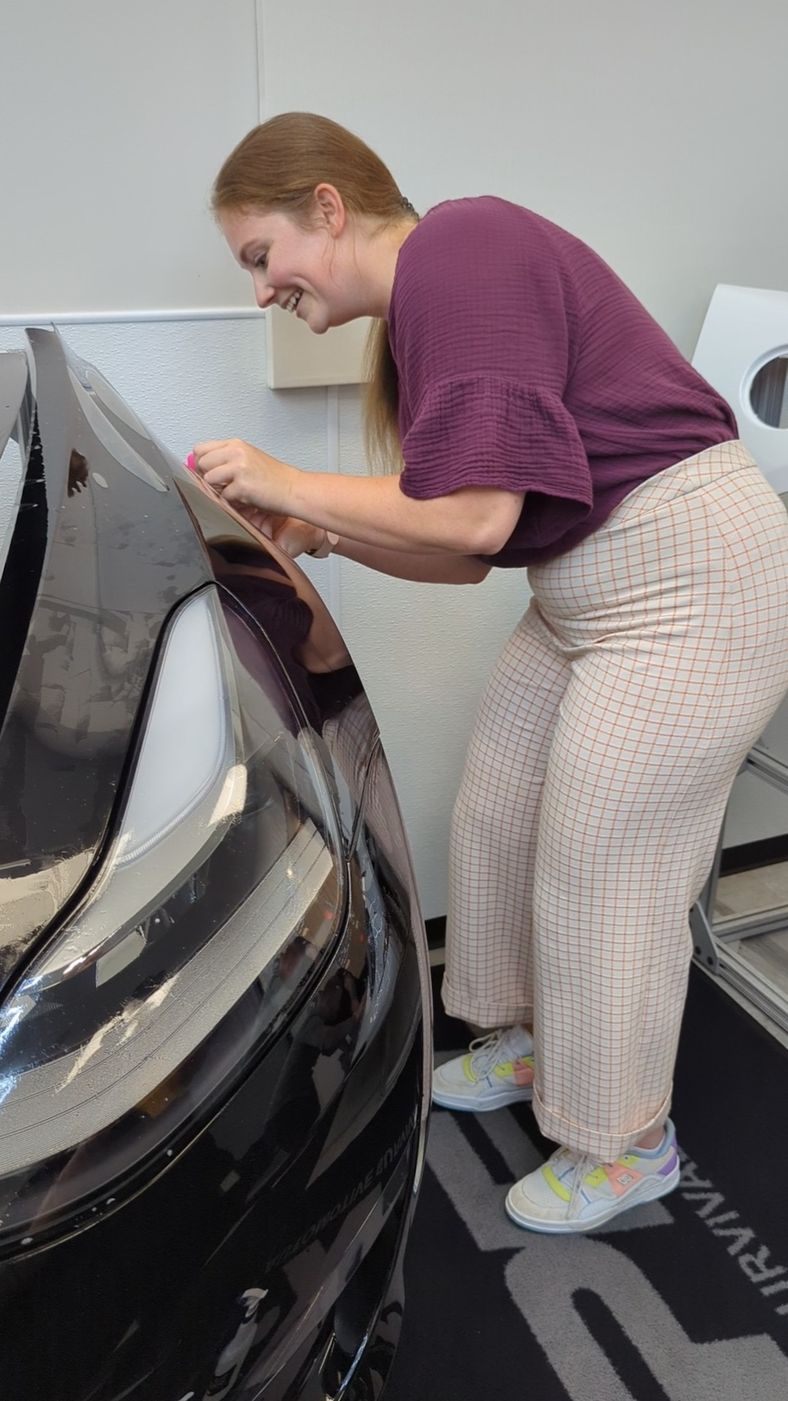
There are shops that specialize in adding paint protection film, typically vinyl wrap or detail shops. To help these shops, and car owners who want the benefits of paint protection film on their brand new cars, XPEL has developed a growing network of car dealerships who offer paint protection film as an option on vehicles, either pre-installed or as a selection during the purchase.
Even better for buyers who know they want this, XPEL has also partnered with OEMs to install paint protection film straight off the assembly line before the brand new vehicle is delivered to the customer.
Protecting Your Investment
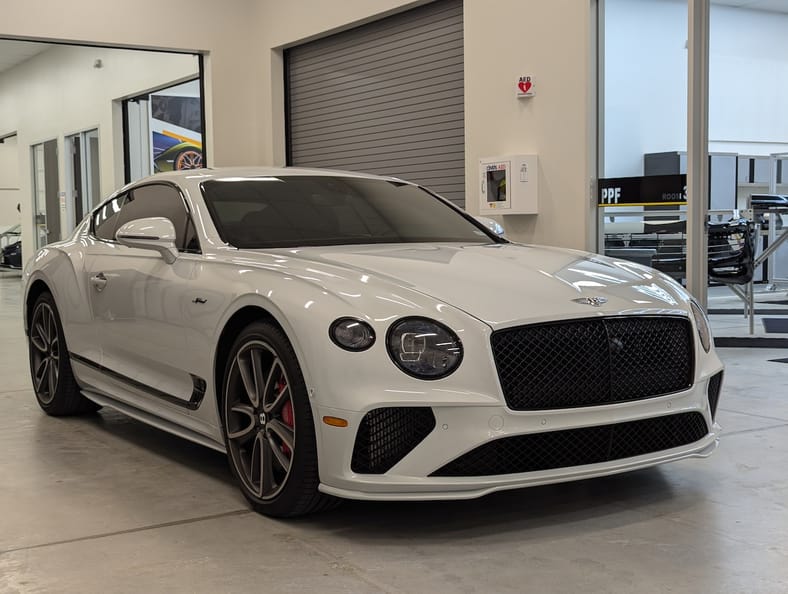
Paint protection film on vehicles is still most common on high-end vehicles – super cars, Porsches, Audis, and BMWs top off the list. This does not mean that the product does not have benefits for the Toyotas and Hondas of the world, though. In fact, after today, I’ll be thinking of PPF the next time I enter a dealership to purchase a new car.
Because protecting your four-wheeled baby protects not only your investment, but that original paint color you first fell in love with.
More About:Car Culture






